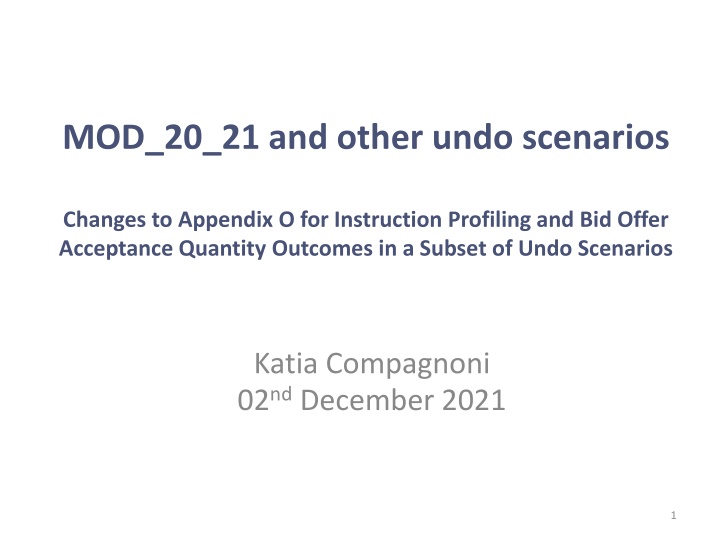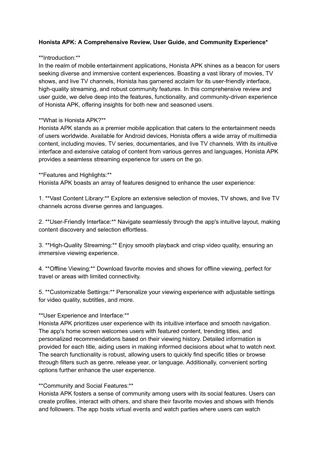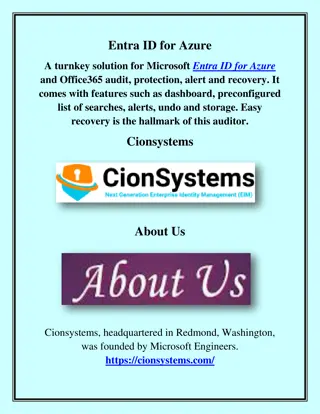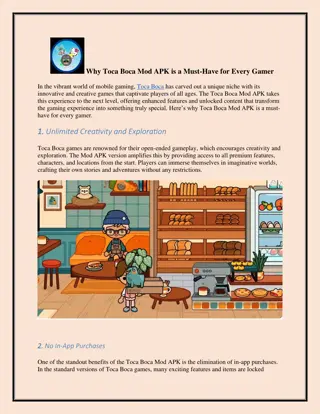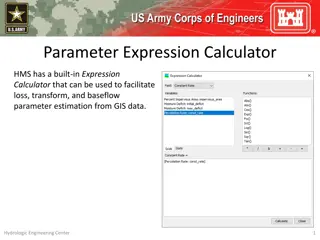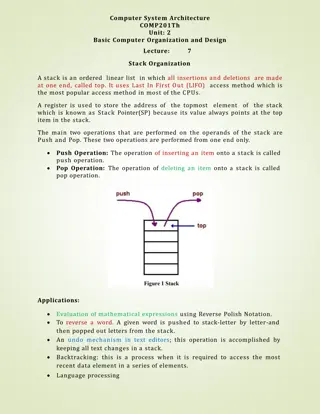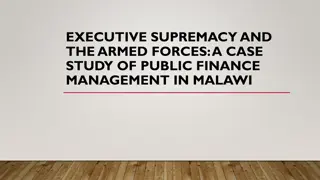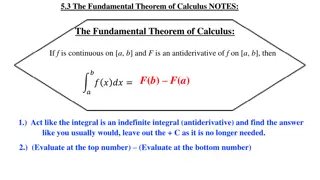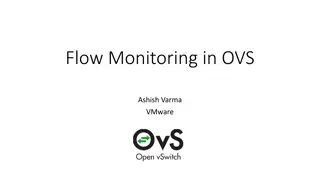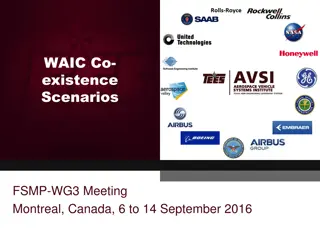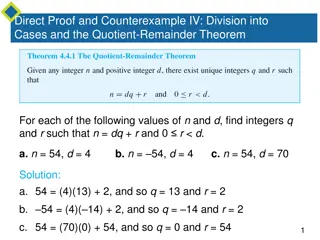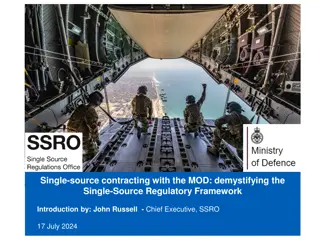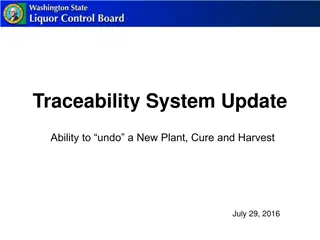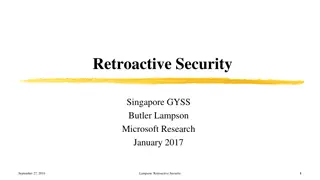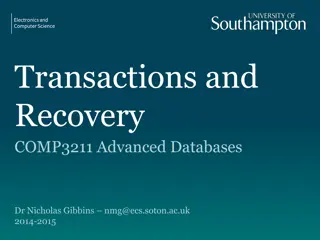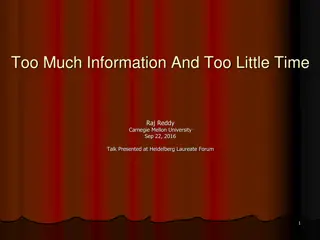MOD_20_21 and other undo scenarios
In a subset of undo scenarios, changes to Appendix O impact instruction profiling and bid offer acceptance quantities. The scenarios involve rare outcomes deviating from rules, requiring system corrections. Detailed impact assessments are necessary due to high costs and risks of these changes. Four scenarios are identified, each with varying materiality levels and timelines of identification since 2018. Explore the background, summary, and details of each scenario to understand the proposed corrections and potential impacts.
Download Presentation

Please find below an Image/Link to download the presentation.
The content on the website is provided AS IS for your information and personal use only. It may not be sold, licensed, or shared on other websites without obtaining consent from the author.If you encounter any issues during the download, it is possible that the publisher has removed the file from their server.
You are allowed to download the files provided on this website for personal or commercial use, subject to the condition that they are used lawfully. All files are the property of their respective owners.
The content on the website is provided AS IS for your information and personal use only. It may not be sold, licensed, or shared on other websites without obtaining consent from the author.
E N D
Presentation Transcript
MOD_20_21 and other undo scenarios Changes to Appendix O for Instruction Profiling and Bid Offer Acceptance Quantity Outcomes in a Subset of Undo Scenarios Katia Compagnoni 02nd December 2021 1
Subset of Undo Scenarios - Background In four scenarios, expected to be relatively rare, the outcome in the system is different to that in rules; They refer to undo dispatch actions in Instruction Profiling, originally considered defects, but now classed as changes; The SEMC decision on Mod_27_18 requires SEMO to correct those non-compliances by fixing the systems; The vendor s recent high level impact assessment states that each change is deemed very high cost and very high risk and will need individual detailed assessments; SEMO is proposing to request detailed impact assessments for three scenarios (two of which grouped) while changing the T&SC for scenario 2. 2
Subset of Undo Scenarios - Summary Scenario 1 SYNC with MWOF undo to level below MSG before reaching MSG Change to the system pending detailed impact assessment (grouped with Scenario 4): 7 cases identified since Oct 2019 1 in 2019, 3 in 2020 and 3 in 2021 one case of high materiality (approx. 800K) in 2020 all others low materiality but 2 unknown due to no IP profile Scenario 2 SYNC with DESY after MSG but before reaching Min On Time Modification to the Code (Mod_20_21) to align with the system: No cases identified since go live not material Scenario 3 DESY with SYNC after reaching zero before Min Off Time Change to the system pending detailed Impact assessment: 7 cases identified since go live - 1 in 2018, 1 in 2019, and 5 in 2021 Materiality vary from >100 to approximately 200K Scenario 4 SYNC with DESY before reaching MSG Change to the system pending detailed impact assessment (grouped with Scenario 1): 2 case identified in 2018 and none since Materiality of 190K and 580K 3
Subset of Undo Scenarios - Summary Scenario 1 SYNC with MWOF undo to level below MSG before reaching MSG Change to the system pending detailed impact assessment (grouped with Scenario 4): 7 cases identified since Oct 2019 1 in 2019, 3 in 2020 and 3 in 2021 one case of high materiality (approx. 800K) in 2020 all others low materiality but 2 unknown due to no IP profile Scenario 2 SYNC with DESY after MSG but before reaching Min On Time Modification to the Code(Mod_20_21) to align with the system: No cases identified since go live not material Scenario 3 DESY with SYNC after reaching zero before Min Off Time Change to the system pending detailed Impact assessment: 7 cases identified since go live - 1 in 2018, 1 in 2019, and 5 in 2021 Materiality vary from >100 to approximately 200K Scenario 4 SYNC with DESY before reaching MSG Change to the system pending detailed impact assessment (grouped with Scenario 1): 2 case identified in 2018 and none since Materiality of 190K and 580K 4
Scenario 1 Intention of rules SYNC to MSG with subsequent MWOF below MSG before reaching MSG MW SYNC Issue SYNC Effective FPN time Min On Time 5
Scenario 1 Intention of rules SYNC to MSG with subsequent MWOF below MSG before reaching MSG MW MWOF SYNC Issue MWOF SYNC Effective FPN time Min On Time 6
Scenario 1 Intention of rules SYNC to MSG with subsequent MWOF below MSG before reaching MSG MW PMWO SYNC Issue MWOF SYNC Effective FPN time Min On Time 7
Scenario 1 Happening in systems SYNC to MSG with subsequent MWOF below MSG before reaching MSG MW MWOF SYNC Issue MWOF SYNC Effective FPN time Min On Time 8
Scenario 1 Impacted area SYNC to MSG with subsequent MWOF below MSG before reaching MSG MW PMWO SYNC Issue MWOF SYNC Effective FPN time Min On Time Profile will return to normal with a MWOF > MSG following the heat state at the time of the new MWOF 9
Scenario 4 Intention of rules SYNC and DESY before MSG MW SYNC Effective SYNC Issue FPN time Min On Time 10
Scenario 4 Intention of rules SYNC and DESY before MSG MW DESY SYNC Effective SYNC Issue FPN time Min On Time 11
Scenario 4 Intention of rules SYNC and DESY before MSG MW DESY SYNC Effective SYNC Issue PDES FPN time Min Off Time Min On Time 12
Scenario 4 Happening in systems SYNC and DESY before MSG MW DESY SYNC Effective SYNC Issue PDES FPN time Min Off Time Min On Time 13
Scenario 4 Impacted area SYNC and DESY before MSG MW DESY SYNC Effective SYNC Issue PDES FPN time Min Off Time Min On Time 14
Subset of Undo Scenarios - Summary Scenario 1 SYNC with MWOF undo to level below MSG before reaching MSG Change to the system pending detailed impact assessment (grouped with Scenario 4): 7 cases identified since Oct 2019 1 in 2019, 3 in 2020 and 3 in 2021 one case of high materiality (approx. 800K) in 2020 all others low materiality but 2 unknown due to no IP profile Scenario 2 SYNC with DESY after MSG but before reaching Min On Time Modification to the Code (Mod_20_21) to align with the system: No cases identified since go live not material Scenario 3 DESY with SYNC after reaching zero before Min Off Time Change to the system pending detailed Impact assessment: 7 cases identified since go live - 1 in 2018, 1 in 2019, and 5 in 2021 Materiality vary from >100 to approximately 200K Scenario 4 SYNC with DESY before reaching MSG Change to the system pending detailed impact assessment (grouped with Scenario 1): 2 case identified in 2018 and none since Materiality of 190K and 580K 15
Scenario 2 Intention of rules SYNC and DESY after MSG before Min On Time MW SYNC Effective SYNC Issue FPN time Min On Time 16
Scenario 2 Intention of rules SYNC and DESY after MSG before Min On Time MW DESY SYNC Effective SYNC Issue FPN time Min On Time 17
Scenario 2 Intention of rules SYNC and DESY after MSG before Min On Time MW DESY SYNC Effective SYNC Issue PDES FPN time Min Off Time Min On Time 18
Scenario 2 Happening in systems SYNC and DESY after MSG before Min On Time MW DESY PSYN SYNC Effective SYNC Issue PDES FPN time Min Off Time Min On Time 19
Scenario 2 Impacted area SYNC and DESY after MSG before Min On Time MW DESY PSYN SYNC Effective SYNC Issue PDES FPN time Min Off Time Min On Time Profile will return to normal after PISP (pseudo instruction at the Imbalance Settlement Period boundary) which will close off Pseudo Instructions 20
Scenario 2 - MOD_20_21 Proposed Legal Drafting Additional paragraph in the PSYN definition Appendix O.16 Table 3 If a subsequent DESY Dispatch Instruction has an Instruction Effective Time which is between the Instruction Effective Time of a prior SYNC Dispatch Instruction and the Instruction Effective Time of the corresponding PSYN Pseudo Dispatch Instruction that would nominally be created, but after the time when the Physical Notification Instruction Profile for the SYNC Dispatch Instruction reaches the Registered Minimum Stable Generation, then the PSYN Pseudo Dispatch Instruction that would nominally be created for the corresponding SYNC Dispatch Instruction shall be created. 21
Scenario 2 - MOD_20_21 correction for FRR Please note that an error in the Modification form shows changes referring to Appendix O.14 table 1: 14. How the Instruction Codes and Instruction Combination Codes are used for the calculation of Physical Notification Instruction Profiles is described in Table 1. While the paragraph on PSYN definition actually belongs to Appendix O.16 table 3: 16. A Pseudo Dispatch Instruction shall not be created for a corresponding Dispatch Instruction where the System Operator issues a subsequent Dispatch Instruction with Instruction Effective Time at or before the time at which the first Target Instruction Level is reached. 22
Subset of Undo Scenarios - Summary Scenario 1 SYNC with MWOF undo to level below MSG before reaching MSG Change to the system pending detailed impact assessment (grouped with Scenario 4): 7 cases identified since Oct 2019 1 in 2019, 3 in 2020 and 3 in 2021 one case of high materiality (approx. 800K) in 2020 all others low materiality but 2 unknown due to no IP profile Scenario 2 SYNC with DESY after MSG but before reaching Min On Time Modification to the Code (Mod_20_21) to align with the system: No cases identified since go live not material Scenario 3 DESY with SYNC after reaching zero before Min Off Time Change to the system pending detailed Impact assessment: 7 cases identified since go live - 1 in 2018, 1 in 2019, and 5 in 2021 Materiality vary from >100 to approximately 200K Scenario 4 SYNC with DESY before reaching MSG Change to the system pending detailed impact assessment (grouped with Scenario 1): 2 case identified in 2018 and none since Materiality of 190K and 580K 23
Scenario 3 Intention of rules DESY and SYNC after zero before Min Off Time MW DESY FPN time Min Off Time 24
Scenario 3 Intention of rules DESY and SYNC after zero before Min Off Time MW DESY SYNC Issue SYNC Effective FPN time Min Off Time Min On Time 25
Scenario 3 Intention of rules DESY and SYNC after zero before Min Off Time MW PSYN DESY SYNC Issue SYNC Effective FPN time Min Off Time Min On Time 26
Scenario 3 Happening in systems DESY and SYNC after zero before Min Off Time MW PSYN DESY SYNC Issue SYNC Effective PDES FPN time Min Off Time Min On Time 27
Scenario 3 Impacted area DESY and SYNC after zero before Min Off Time MW PSYN DESY SYNC Issue SYNC Effective PDES FPN time Min Off Time Min On Time Profile will return to normal after PISP (pseudo instruction at the Imbalance Settlement Period boundary) which will close off Pseudo Instructions 28
Subset of Undo Scenarios Summary of proposed approach SEMO propose 1 Modification to the T&SC and 3 system changes; Scenario 4 could be considered a subset requirement of Scenario 1 (subject to vendor approval); Until receiving vendor approval of the above, Mod_21_21 should be put on hold; Given the high level assessment, SEMO deem more beneficial a change the T&SC for Scenario 2 as it is the least impacting of the 4; The earliest implementation is Release K spring 2023; Precedence to be given to bundled Scenarios 1 and 4; Resettlement back to 2018 only for existing upheld queries; The remaining period to be covered in scheduled M+4/13. 29
Subset of Undo Scenarios Alternative approaches All scenarios should require detailed Impact Assessment regardless of cost; All scenarios should require Modifications to the T&SC and no changes to the systems ; Both T&SC and system could be left unchanged with a regulatory acknowledgement of the non-compliance; Proposed changes to the T&SC could be made to Chapter H instead of Appendix O to maintain the original intent; Changes to the system could be implemented but applied only from an agreed cut off point; Others? 30
